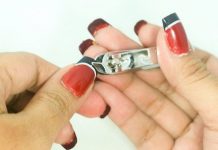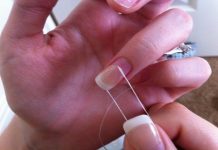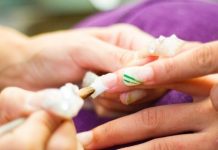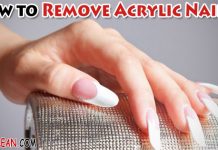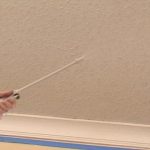In this article, we will discuss how to remove acrylic nails at home. When your acrylic nails start to look yellow, or when excessive application has made your nails to become thick, it’s time for you to get rid of them.
Ideally, it is suggested that you let your fake nails to grow out, but if you can’t wait for that long, there are some methods to remove acrylic nails at home.
NOTE: Removing your nail extension from the natural nail can cause a serious and long-term injury to your nail bed. If your nail tip lifts or gets broken, use an artificial nail glue to reseal it until you are ready to remove it again.
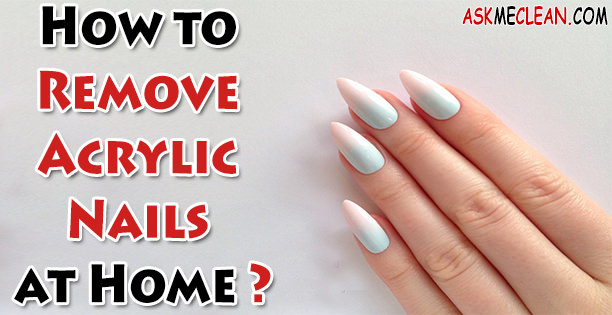
Things You Will Need to Remove Acrylic Nails:
- Nail file for natural nails
- Nail clippers
- Two bowls, each large enough to fit one hand per bowl.
- Aluminum Foil
- Acetone
- Bag for garbage
- Hot water
- Almond oil or olive oil
- Kitchen towel
- Nail block/buffer
- Cotton pads
- Towels or newspaper to cover surface
There are two methods in which you can perform this task. If you are short on time, you should go for the first method. If not we have the other method as well to do it.
A.) Method 1 to Remove Acrylic Nails at Home
- Clip your fake nails as much as possible. Do not try to over-cut as you may damage your natural nails while doing so.
- Now, file the surface of your nail in order to break down the acrylic nails and clear way for the acetone to get in.
- Soak several cotton pads in acetone solution and place them on each of the nails.
- After placing cotton balls wrap each finger with foil.
- Let it sit for 30 minutes at least.
- Remember! The moment you unwrap the foil, the break-down of the acrylic nail will stop. This is because; exposing the nails to air will harden them.
- After 30 minutes, get rid of foil (one finger at a time) and wipe them using a clean kitchen towel. This will remove any acrylic which has dissolved.
- Now soak cotton pads in acetone once again and repeat the process again.
- There may be some residue still left; however you will be able to file it off gently. If you can’t, you will need to repeat the soaking and wrapping procedure for 15 to 20 minutes more.
- Afterwards, wash your hands thoroughly with a non-abrasive soap. This is because the acetone is highly drying agent and it can affect your hands and nails significantly.
- Finally, massage your fingers using olive or almond oil. After that apply a good quality hand cream.
B.) Method 2 to Remove Acrylic Nails at Home
Depending on the size of the bowl you are going to use, you may need to soak one hand at a time, which make this method a bit longer.
- Take two bowls – one big and one small. Fill the bigger bowl with hot water and the smaller one with acetone. Gently place the smaller bowl inside the bigger bowl.
- Now, dip your fingers into the acetone solution. Make sure you deep finger no more than the first joint of your finger. This will help prevent you hands from drying out.
- Keep them dipped for a minimum of 20 minutes before you take them out.
- Afterwards, take your fingers out and wipe the acrylic nail away. The acetone solution will make the fake nails to lose.
- Repeat the steps 3 and 4 as long as it takes to completely remove acrylic nails. This may take more than an hour for each hand.
- Do not try to pick the acrylic as it lifts. This may cause pain and could result in long-lasting or even permanent damage to your fragile nail bed.
- When the first set of nails is clear of acrylic nail, repeat the same process for the second hand.
- After removing fake nails from the other hand as well, wash your hands with a non-abrasive soap.
- When you are done, apply a fine amount of olive or almond oil on your hands and fingers. This will prevent your fingers from getting dry due to the application of acetone.
- Finally, moisturize your hands.
After Care of Nails:
- In order to make acrylic nail stick to your nail bed, several layers of your natural nail are drilled or filed away. This makes your nails to become weak and fragile for up to 3 growth cycles (from cuticle to the tip). This can take up to six months for one cycle to complete.
- Nails grow slower during the winter. So have patience and encourage the growth by moisturizing and using a product that are known to improve and strengthen nails.
- Make a habit of moisturizing your hands and nails regularly. You can even buy a nail/hand treatment pack from a drug store to give yourself a monthly hand-pamper treatment.

